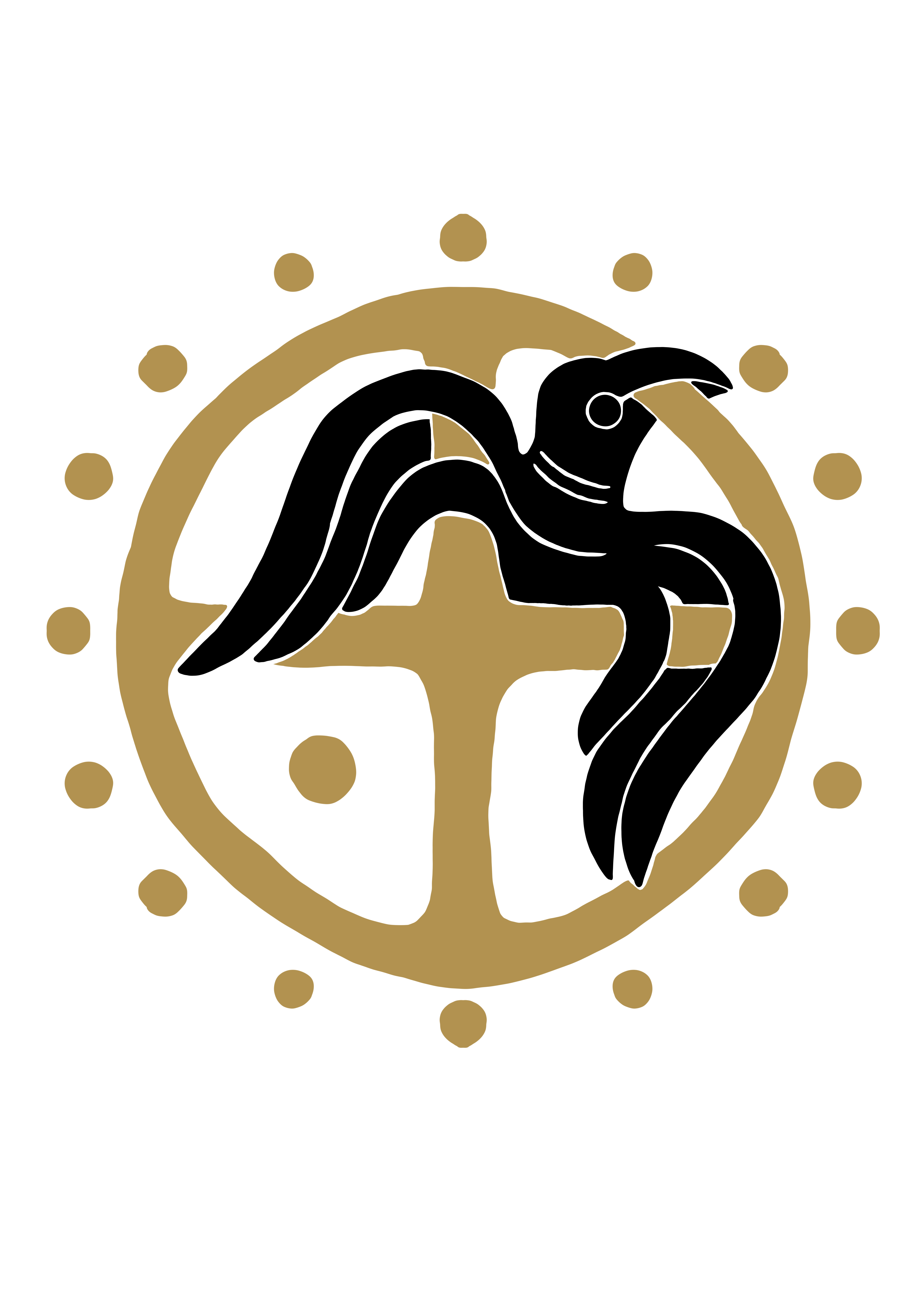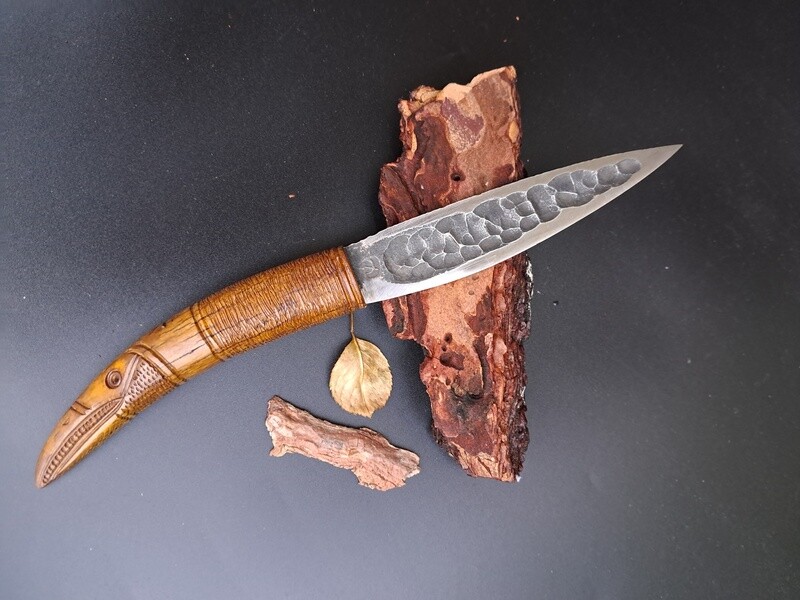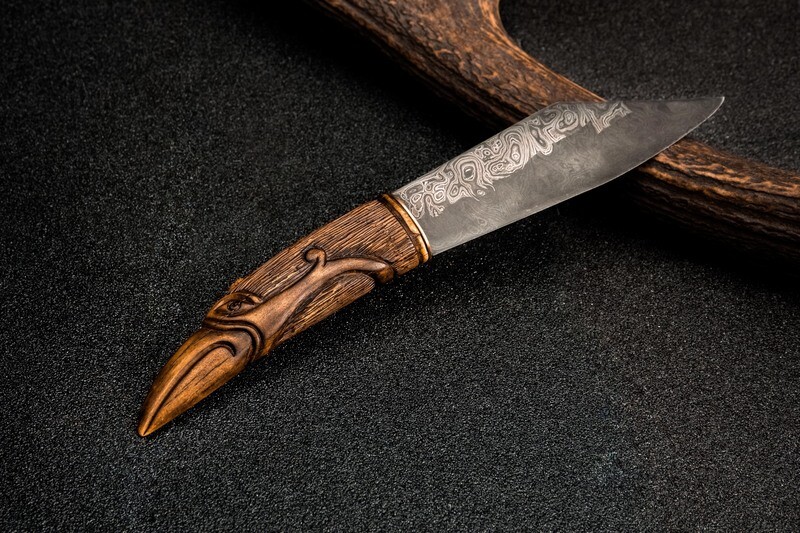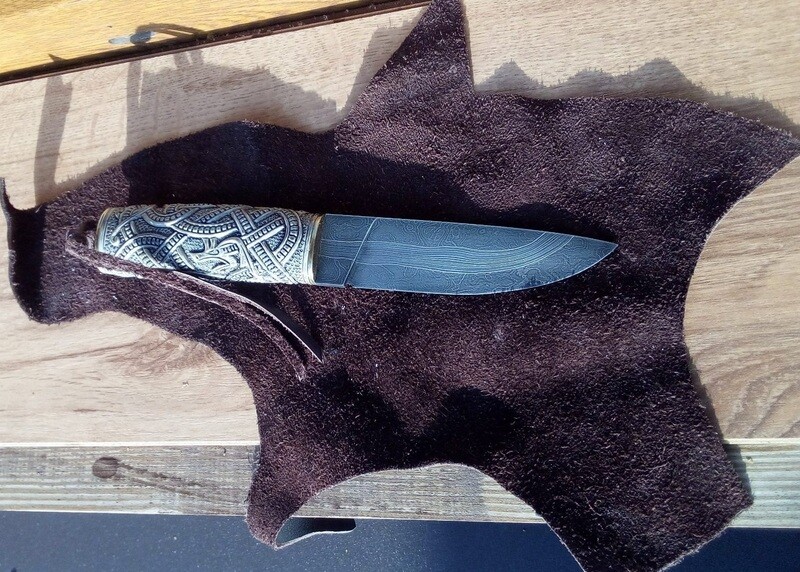Norse Knife & Seax
Dive into the captivating world of Viking knives, seaxes, and historical blade recreations with AlgizRune Forge, where beauty meets functionality in a timeless fusion of craftsmanship and culture.
These artifacts offer a tantalizing glimpse into the daily lives of Viking Age inhabitants, serving as versatile tools for hunting, fishing, cooking, and combat. The seax, a long single-edged knife, stands as the quintessential sidearm of the Viking warrior, carried proudly in a scabbard on the belt.
What sets Viking knives and seaxes apart is not just their utilitarian value, but their exquisite adornments – intricate patterns and symbols that weave tales of magic and spirituality. Crafted with care, some blades feature pattern-welded steel, a testament to ancient metallurgical mastery, yielding blades both robust and elegant in their distinctive patterning.
These blades were not merely possessions but treasures, often interred with their owners for use in the afterlife. Inscribed with names, runes, or protective spells, each blade bore a story, reflecting the individuality of its wielder and the skill of its maker.
From curved seaxes to straight-bladed knives, Viking blades were designed for close combat, their lethal efficiency honed over centuries of battle and exploration. Yet, they were also symbols of status and prestige, exchanged as gifts or used as currency in a world where craftsmanship was revered.
The legacy of Viking blades echoes through the ages, influencing European blade-making traditions and inspiring modern knife-makers. Today, hand-forged Viking knives and seaxes continue to enchant enthusiasts with their timeless allure and enduring craftsmanship.
#HandForged #VikingKnife #Seax #HistoricalReplica #CustomKnives #VikingCraftsmanship #HandmadeKnives #VikingAge #NorseCulture #Bladesmith #KnifeMaking #VikingStyle #OneOfAKind #HighCarbonSteel #DamascusSteel #VikingWeapon #RuneEngraved #FunctionalArt #ForgedInFire #VikingHeritage
Step into the realm of Viking blades, where history meets artistry, and discover the beauty of the ancient past brought to life.
















